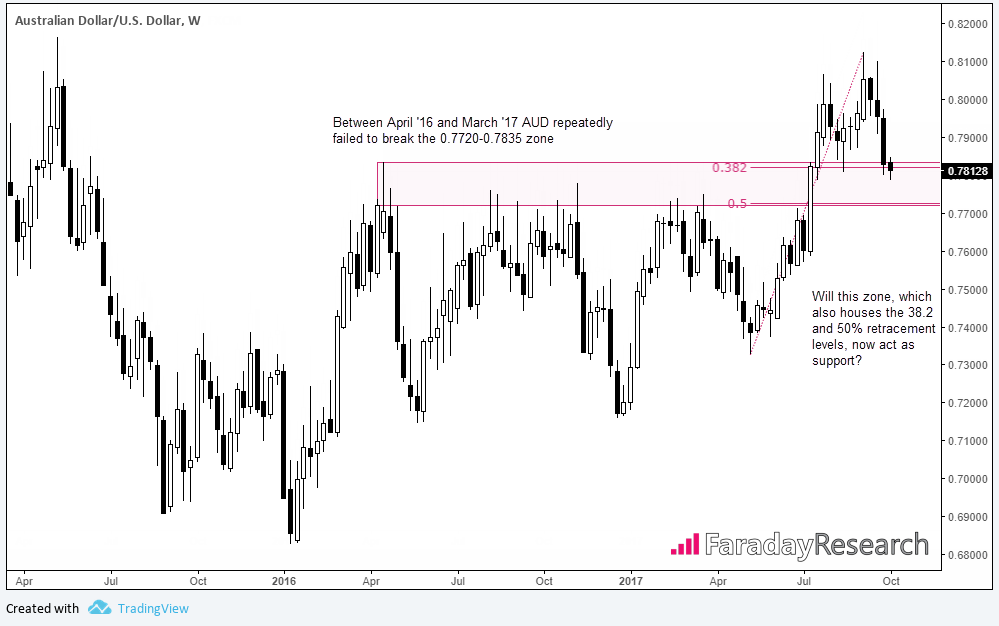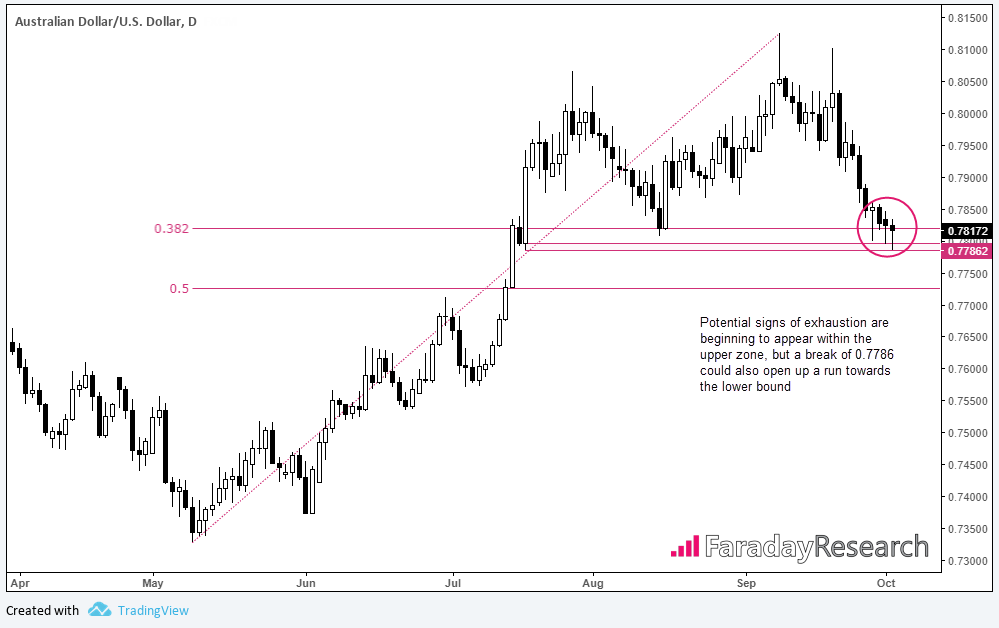The RBA held rates as widely expected and, whilst several adjustments were made on their monthly statement, not a great deal of new information was gleaned from it.
As things stand the consensus for the next RBA hike is for Q4 2018. With such low tightening expectations it makes the goal of statement reading more about deciphering what’s most important to the RBA, over trying to weed out a firm policy change.
For example, the level of the exchange rate is always going to be important to the RBA as the economy relies on exports for growth. So mentioning the exchange rate each month hasn’t had any meaningful impact these past two years, and USD’s unwind has only made any jawboning seem futile.
One of their key concerns surrounding financial stability stems from household debt rising faster than income. If RBA are lucky enough to hit or exceed their own forecasts, they would still be hesitant to raise rates if they doubted households could handle it. So we note the subtle yet important change in today’s statement which makes household debt of prime importance.
Whereas September’s statement concluded the penultimate paragraph with “growth in housing debt has been outpacing the slow growth in household incomes”, October’s statement moved this to the beginning of the paragraph and tacked on “for some time” for added emphasis. This suggests growth and inflation could be dented and they’re more concerned at the levels of debt than they were last month. In a nutshell, their hands are tied even if the economy improves.
The reaction on AUD/USD was suitably muted, but we have reached the upper boundary of a wide zone which is of interest and one we’ll be watching closely.

On the weekly chart AUD failed to close in the 0.7720 to 0.7835 zone following ten failed attempts between April 2016 and the end of February 2017. Each time the market rallied back towards this area, the media would highlight the stickiness of the zone, only to see AUD eventually mover lower. Like the media, markets have a memory, which is why when such an important level breaks it can act as support or resistance in future.
Yet at the beginning of March AUD not only closed within this perilous zone but came close to closing above it. The most bullish week in thirteen months had the 80c level in sight and we then appeared to be in a “new norm”. Sadly, if you were long at 80c the party was short-lived. The resurgence of the USD was gladly welcomed by RBA, and over three weeks of selling later we have arrived at the upper boundary of the zone.

Price action over the next few days, or even hours could determine the sentiment for AUD over the near-term. The decline has slowed a little in recent days and signs of potential exhaustion are beginning to appear above the 38.2% retracement. The current day’s candle is yet to complete, but if we were to see a bullish hammer close above the 38.2% level today, this could be taken as a firmer sign of exhaustion to consider tomorrow. Under this scenario, we would want to stand aside and see a firmer bullish reaction before considering long positions.
However, individual candlestick patterns can be fickle reversal signals, so we could also consider a close beneath 0.7786 support as a bearish continuation signal. That we would find ourselves back within the 0.7720 – 0.7350 zone would not be enough to deter the consideration of short position on the hourly timeframe. This makes 0.7786 support a pivotal level, and price action of the daily close key to how we approach AUD.
